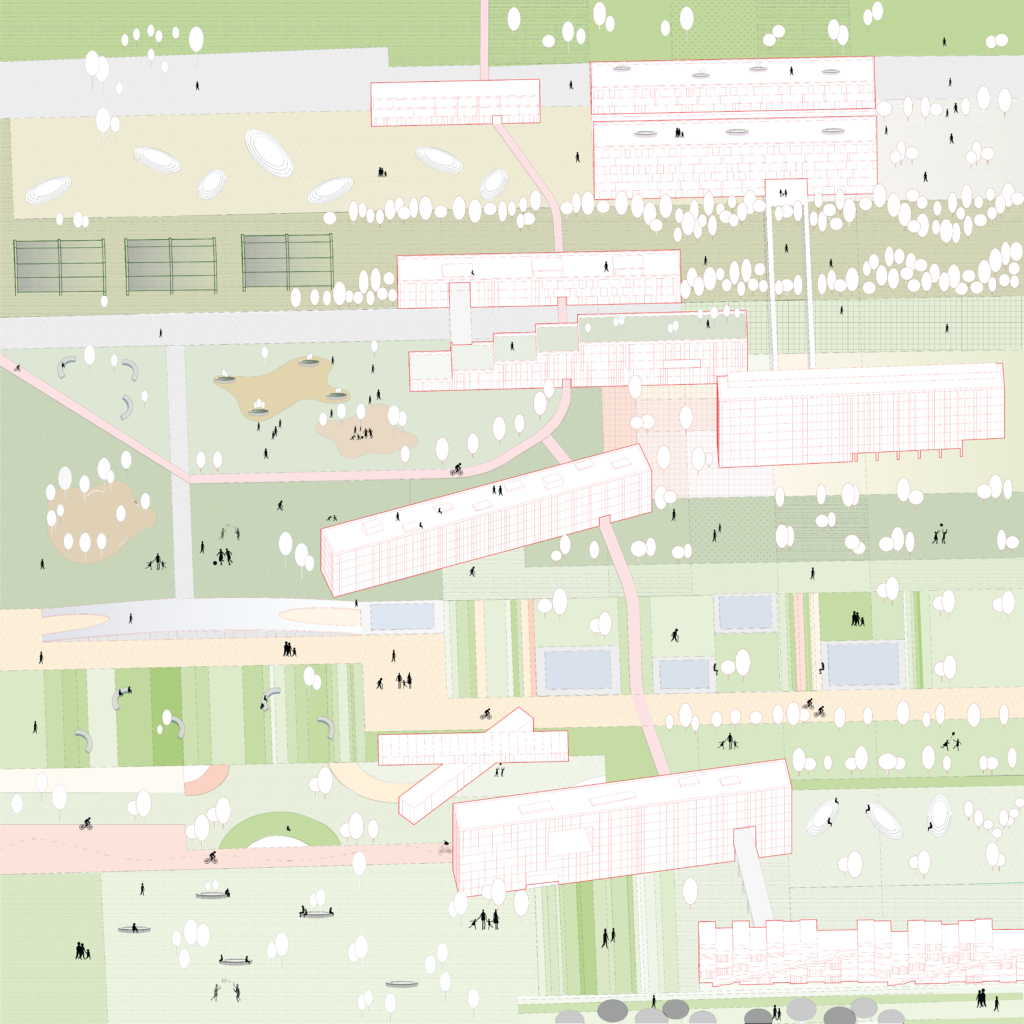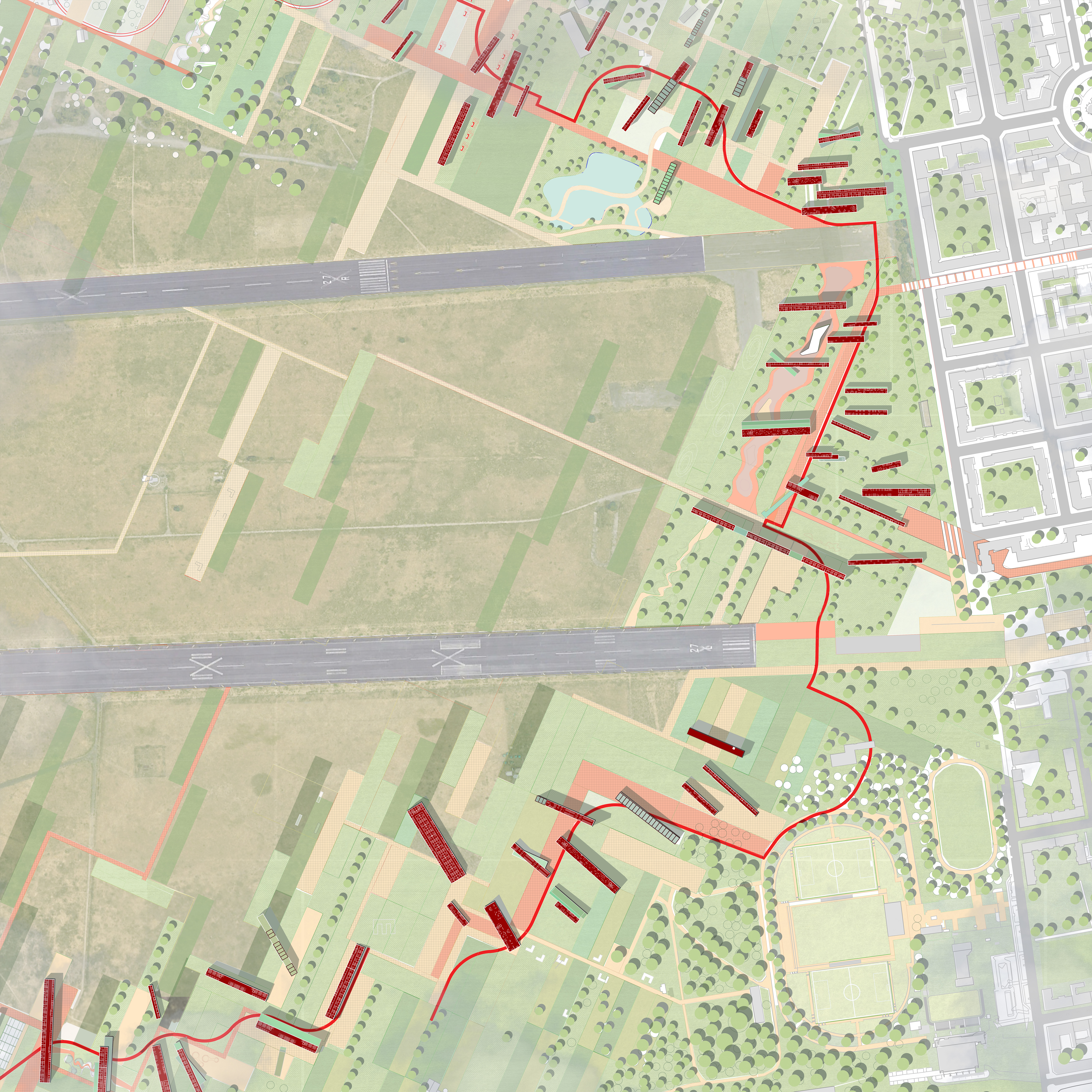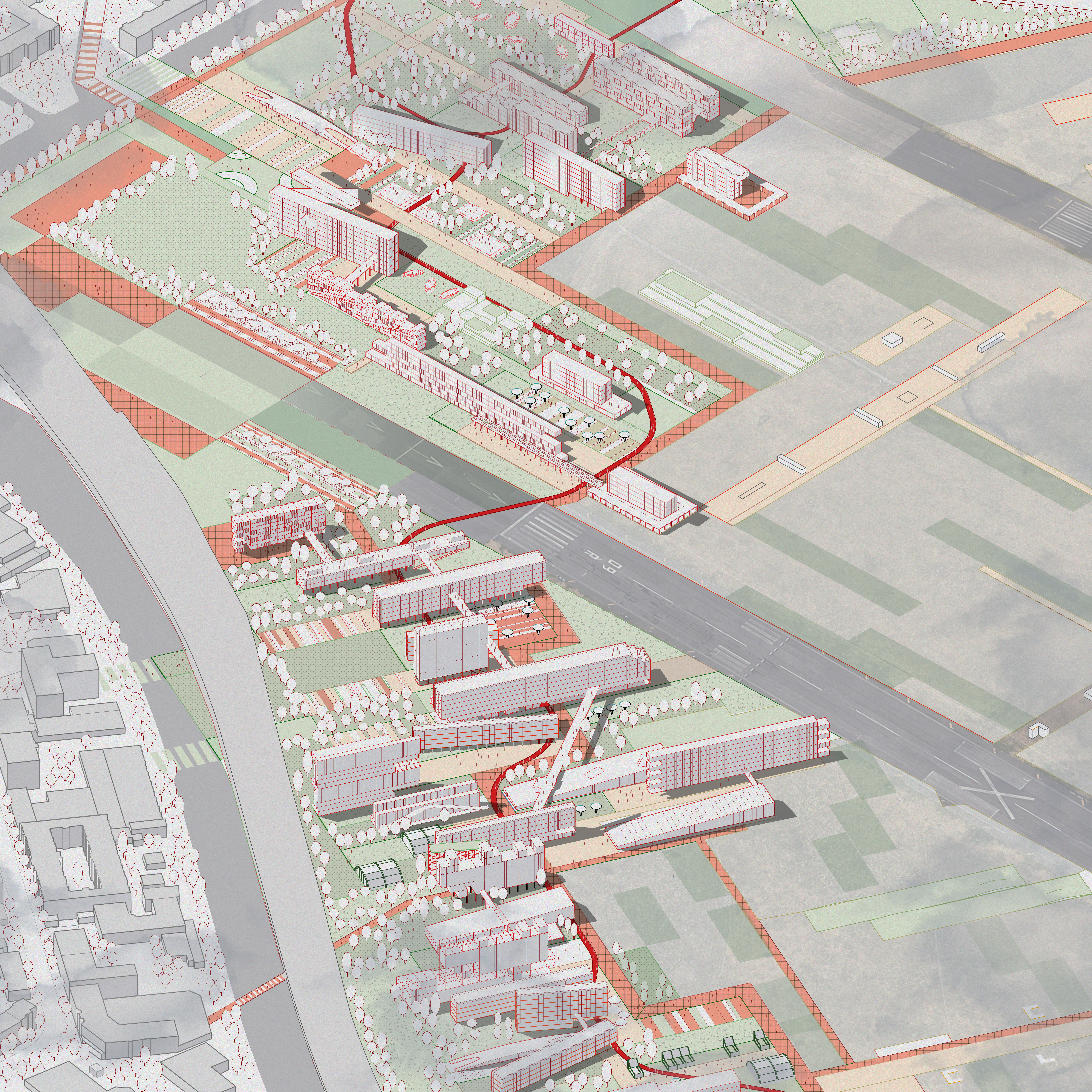Tempelhofer Revamp: Confronting Berlin’s Housing Dilemma
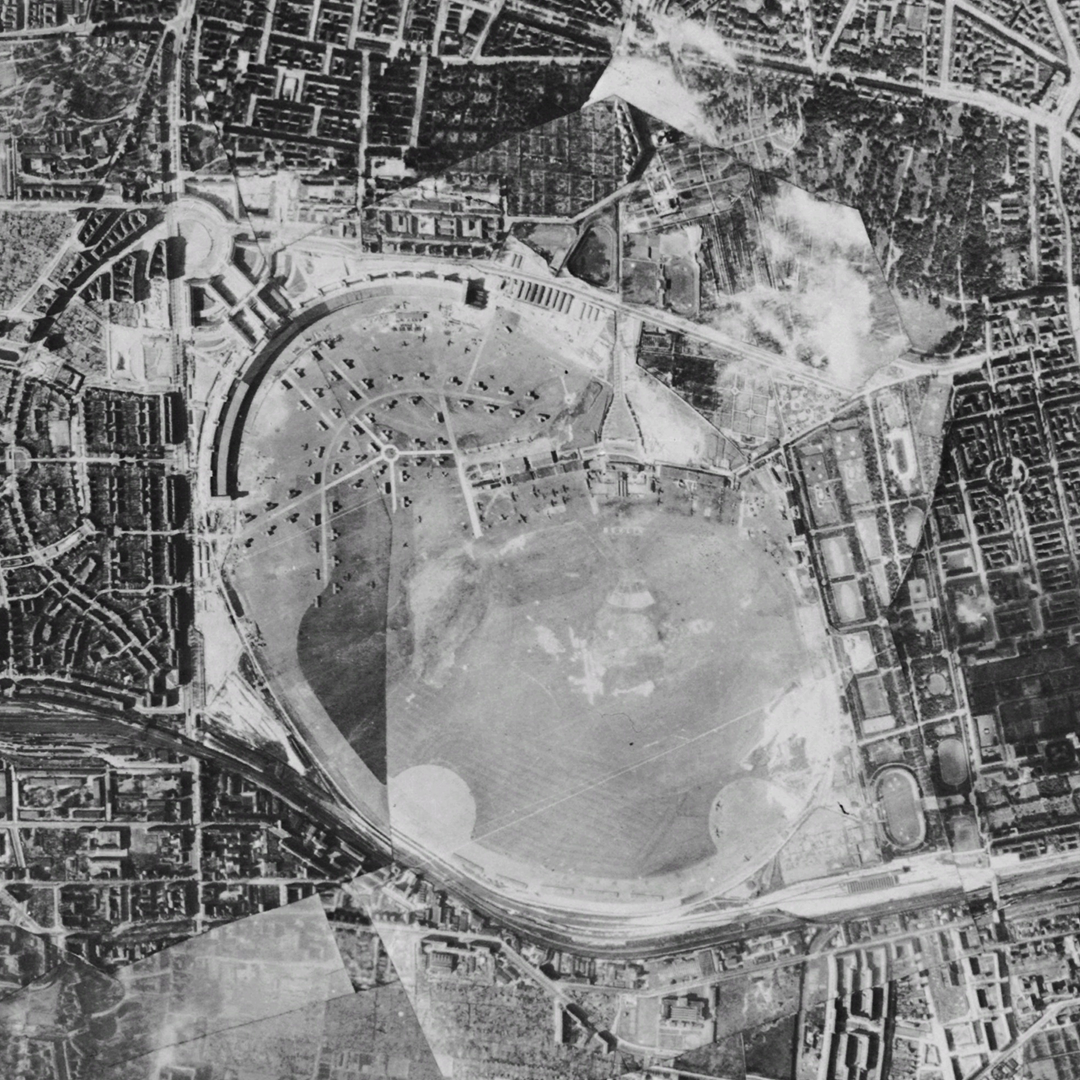
Tempelhofer Feld, once a bustling airfield, holds a significant place in Berlin’s rich and complex history. Originally opened in 1923, Tempelhof Airport was one of the world’s first commercial airports and played a critical role during the Berlin Airlift of 1948-1949, when Allied forces supplied West Berlin amidst the Soviet blockade. The airfield, a symbol of both division and unity, witnessed the rise and fall of the Nazi regime, the Cold War tensions, and the eventual reunification of Germany.

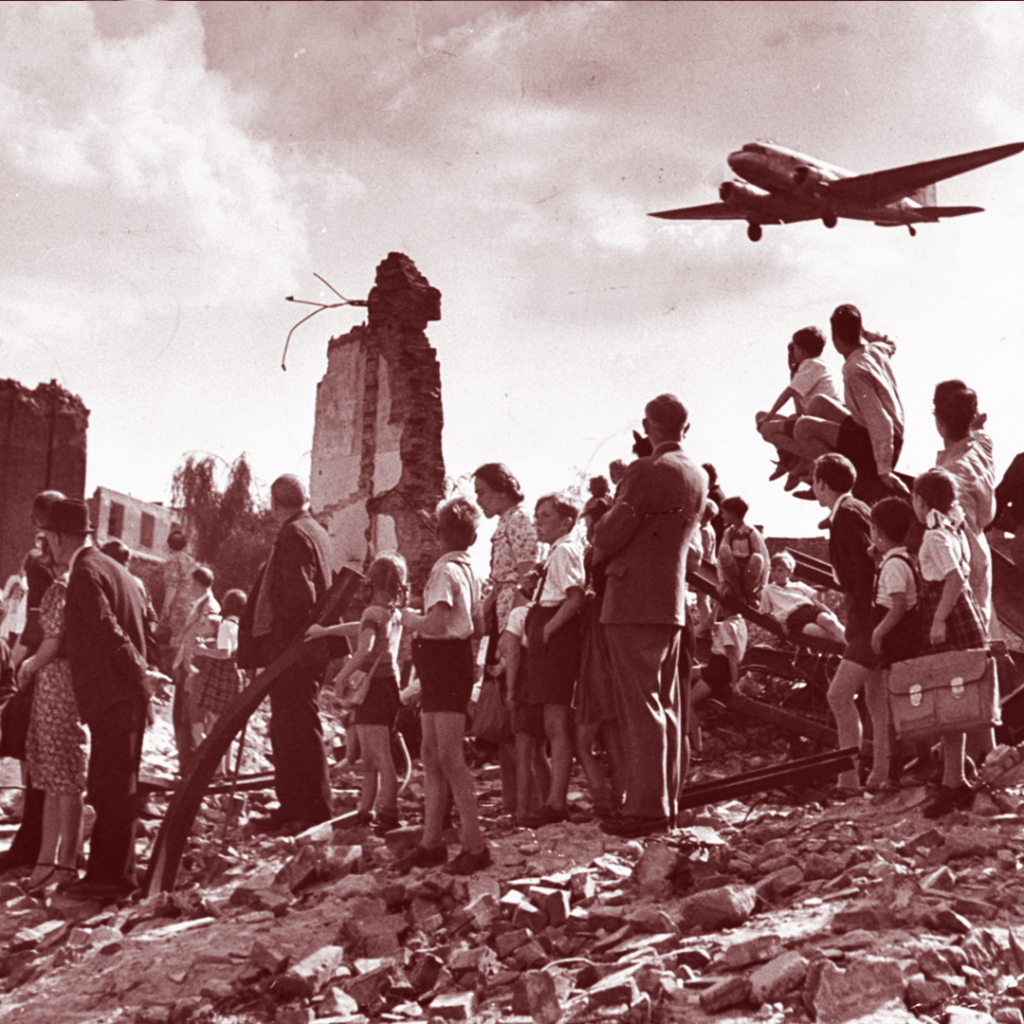
In 2008, Tempelhof ceased operations as an airport and transitioned into one of the world’s largest urban parks, serving as a recreational haven for Berliners. However, as Berlin faces a growing housing crisis, the future of Tempelhofer Feld is at a crossroads. This project explores the potential of transforming this historical site into a sustainable housing solution, addressing the pressing needs of the city while preserving its unique legacy. By revamping Tempelhofer, we aim to confront Berlin’s housing dilemma with innovative urban planning and community-focused development, ensuring that the site continues to reflect Berlin’s resilience and adaptability.

Site: 3,600,000 sq ft

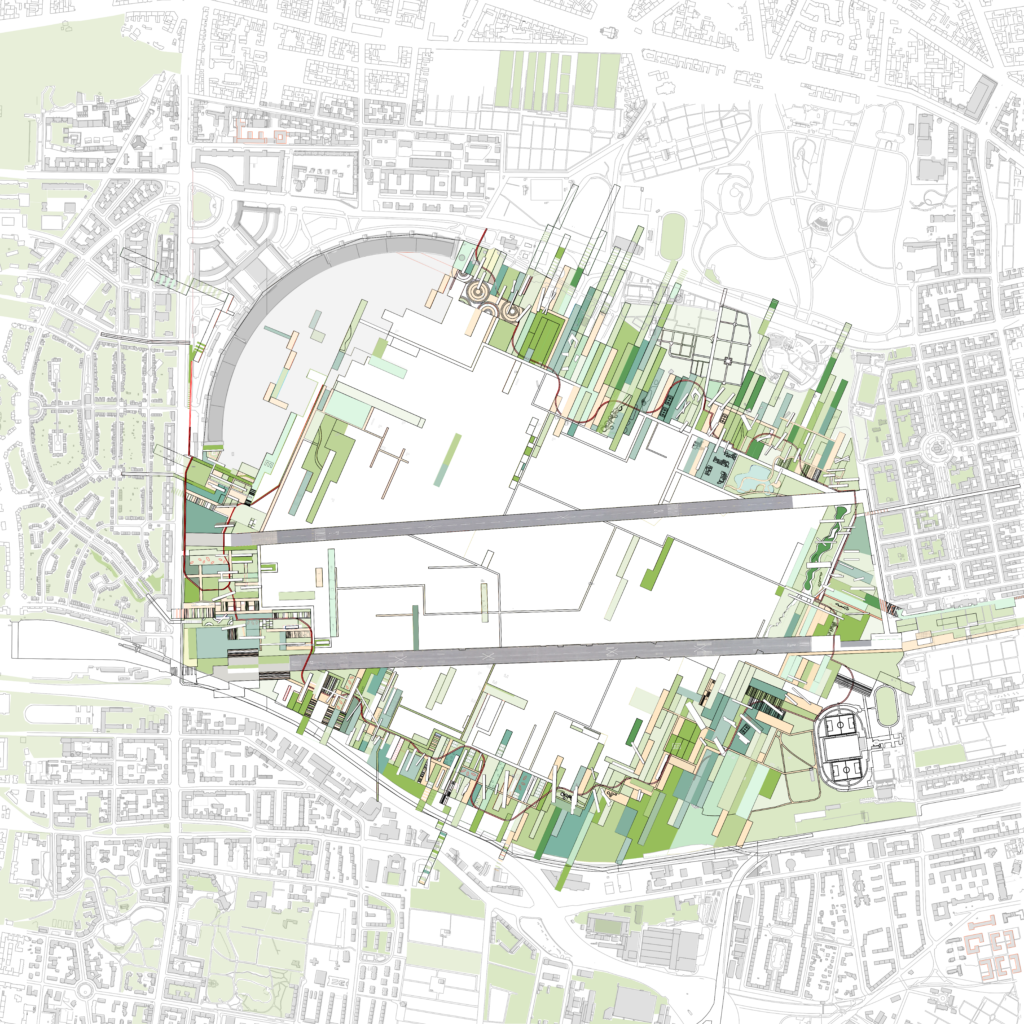
Identifying the existing green areas, and adding green bars as extensions towards the site
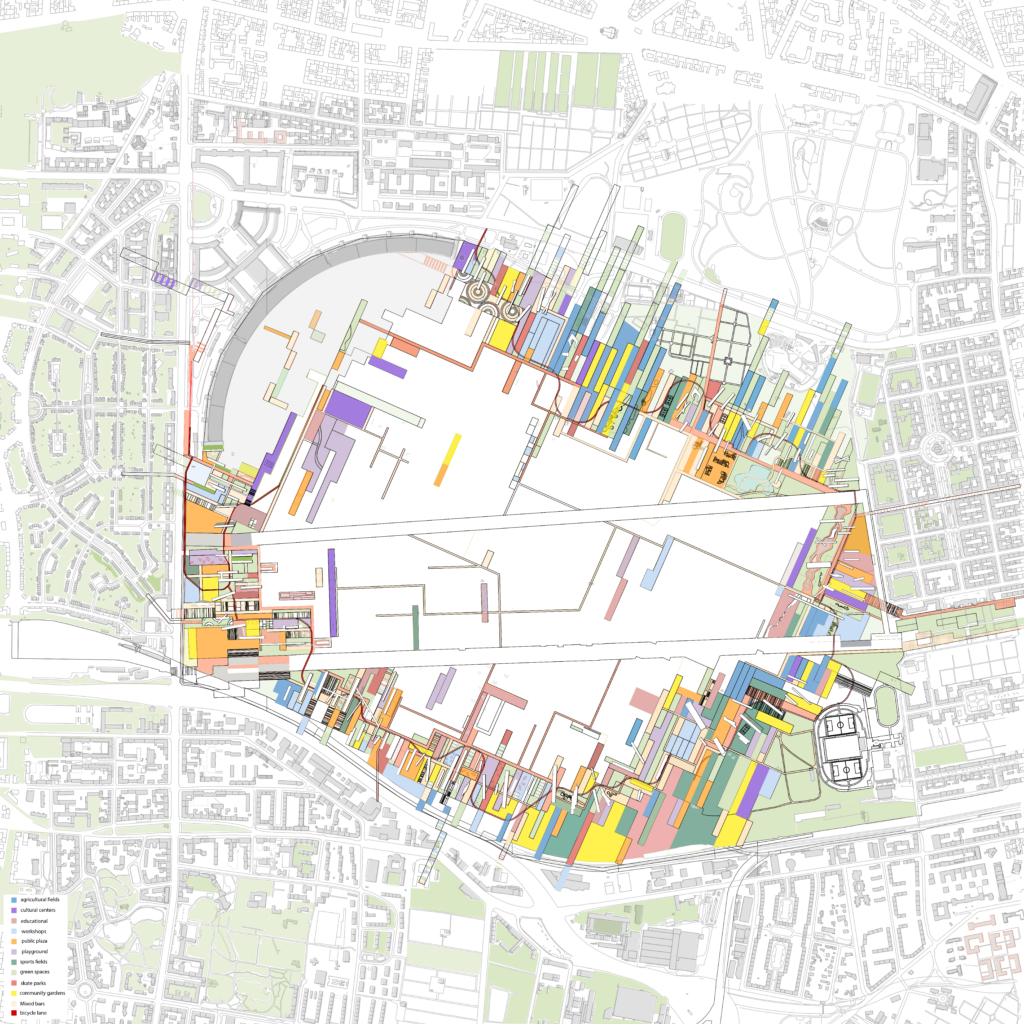
Fields typologies
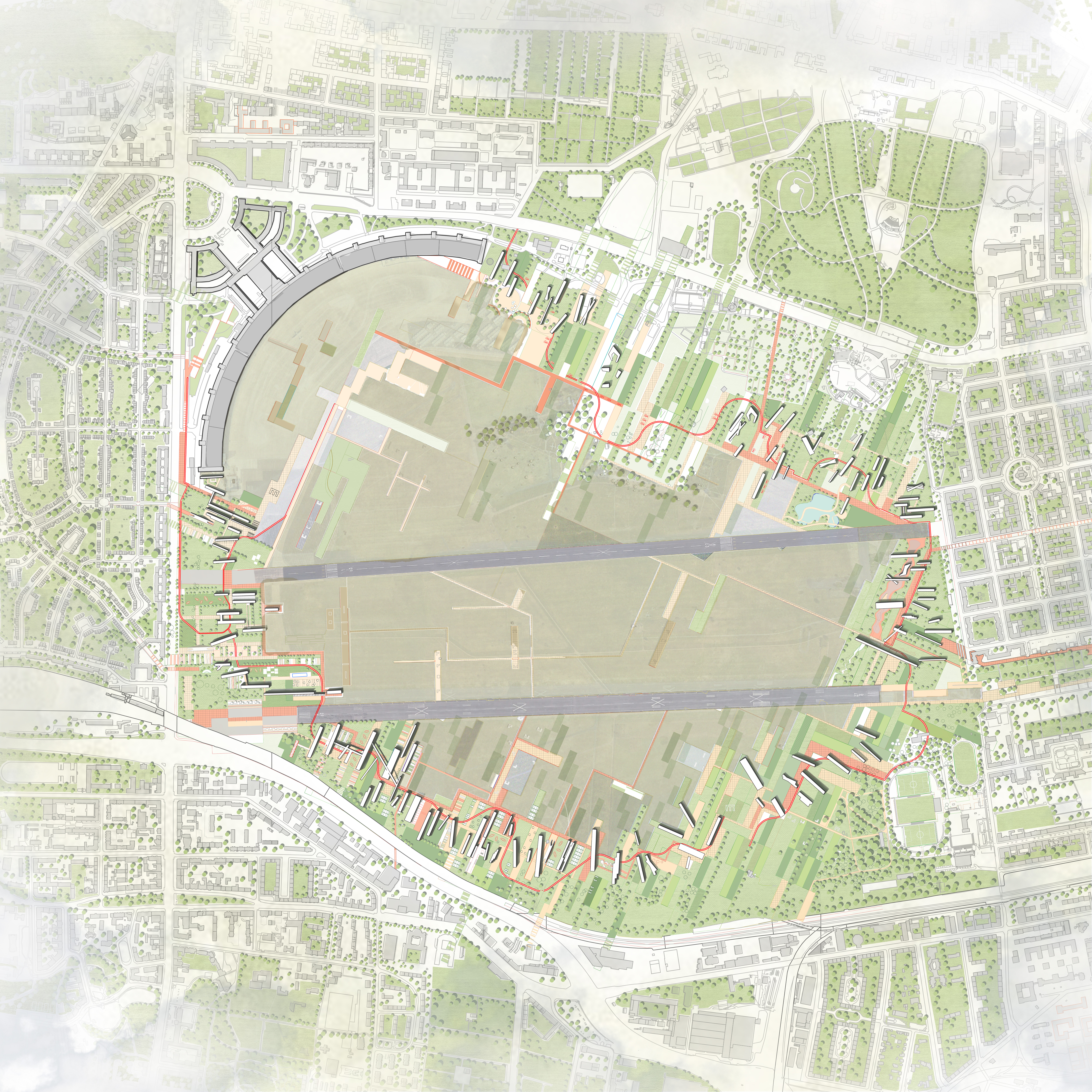
Masterplan
